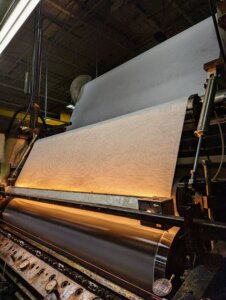Slot Die Coating: What You Need to Know

How thick is slot die coating?
So here’s a question: when we work with slot die coating processes, how thick is the final product? Of course, there’s some level of variation in that answer, depending on the solutions used, the results desired, and the portions used. Keep in mind, this process can produce extremely thin films, and a uniformity across the board. That’s one of the reasons why we’re so reliant on this process.
Generally speaking, the thickness levels range from just a few nanometers to many more microns. Typically, you’ll see the thickness level fall somewhere under two microns. However, you’re not obligated to stick to a specific thickness; one of the benefits of this process is that it’s adaptable, depending on your specific needs.
What is slot die coating used for?
We use slot die coating for many different reasons—and within many different fields. On a very basic level, we utilize it to deposit different liquid chemistries onto substrates. Some of the most common materials used include glass, polymers, and metal. Most precisely, we’ll see this process used to produce thin films. Basically, any field that needs scalable thin film may require slot die coating at some point. But commonly, you’ll see it used in electronics—flexible, printed, and organic electronic to be exact.
Look for, specifically:
- The medical device industry. We rely upon slot die coating to produce different medical devices. Specifically, the perovskite films doctors use for x-ray machines link back to slot die coating! Medical lab chip devices also correspond to slot die coating.
- The food and beverage industry. It may be simpler to connect this process with the food and beverage industry. Think about the film coatings used for food and beverage packaging—they’re liquid films, which is prime for this method.
- Batteries and capacitors. One product type you may associate slot die coating with is batteries and capacitors. Why? Because of the nature of not only lithium ion batteries, but multilayer ceramic capacitors. It’s easier to work within the precise parameters required by these products when you’re coating through this process, as opposed to others.
- Solar energy. Remember what we said about perovskite? Perovskite is an important component in creating perovskite solar cells, crucial to the production of solar panels. Those cells need the thinnest of layers, and that means you need to use slot die coating.
- Micro-electronic products. As previously mentioned, we often use this process specifically for electronic products; this is because micro-electronics rely upon flat panels and thin circuits.
What is the advantage of using this process?
There’s a reason why we use slot die coating so often. We touched on some of the basic advantages above. However, there are more specific reasons why we manufacture so many things this way. For one thing, it’s so easy to maintain uniformity with this process. When manufacturing products, and especially when we’re manufacturing them at a large scale or need to raise the scale quickly.
Additionally, due to the way the process works, there is minimal material wasted. This is another reason why so many manufacturers appreciate slot die coating. The less you waste, the less you’ll needlessly spend. Therefore, this process is automatically more cost efficient. The process precisely meters all solutions, controlling not only the amount of material used, but the ultimate thickness of the coating.
What is transfer coating compared to direct coating?
Here’s something you may have heard of: transfer coating versus direct coating. Each process has its pros and cons, and it’s important that you know what each one brings to the table.
Direct coating notably uses a knife or fixed blade of some sort to spread a liquid solution (often a polymer) onto a substate (often a textile). We determine the thickness of the coating through the position of the knife. The closer the knife is to the substrate, the more thinly the coating spreads across the surface. Typically, we see this coating as ideal for tightly-woven or non-woven surfaces, where the solution is unlikely to sink into the material.
Transfer coating, on the other hand, spreads a resin coating over a transfer paper, after which we laminate the resulting film onto a substrate (again, often a textile).The method often works best for more open materials, wherein materials cannot flow through them.
What are the different types of die coating?
You’ll find multiple types of die coating materials; and there isn’t a single type of coating that works for everything, not even when you’re working with the slot die coating process. Manufacturers select the material that fits each product and order best. Among them include:
- PVD coatings. These are actually physical vapor deposition coatings, which are low temperature coatings.
- CVD coatings. Chemical vapor deposition coatings involve a chemical reaction between the gaseous phase of the material and the substrate’s heated surface.
- TRD coatings. Thermal reaction diffusion coatings are high temperature coatings which produce metal carbides on the surface of substrates containing carbons.
All of these processes yield individualized results—and you can learn more about them! CTI is ready to help. Give us a call at 419-924-5566 or contact us here. The more you know about coatings, the easier it will be for you to select the right one.
- << < Previous Post
- 1
- 2
- ...
- 38
- ...
- 250
- 251 Next Post > >>

